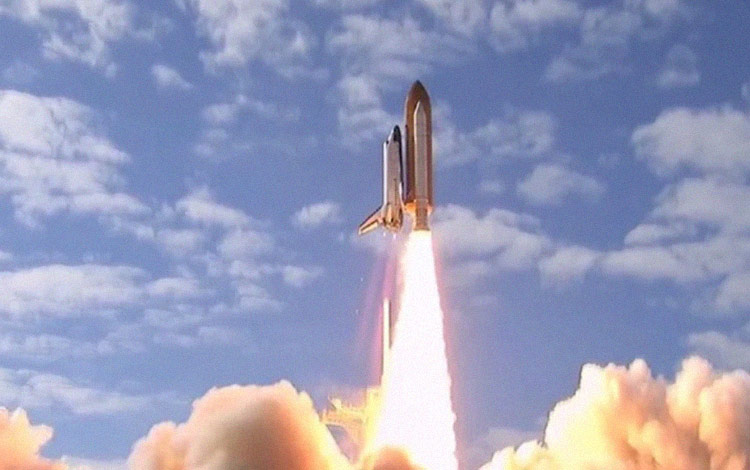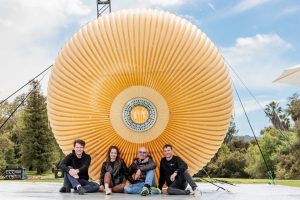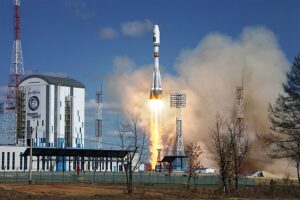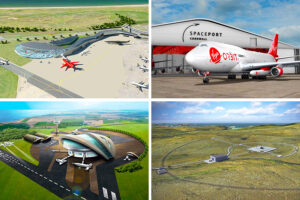Reusable Launch Vehicles Today & Tomorrow
28th Mar 2022
Evolution of Reusable Launch Vehicle
December 2015 marked a turning point in the space industry and the reusable launch vehicle technology. It was then that SpaceX successfully landed the first stage of a Falcon 9 rocket on the landing pad at Cape Canaveral for the first time. Since then, the restoration of Falcon 9 boosters has become commonplace, but the restless Elon Musk did not stop there. Five years later, SpaceX has created the reusable nose cone, and today it is in full swing testing the new generation of the Starship rocket, which should become a completely reusable space vehicle.
To be fair, reusable launch vehicle concepts are not new and have been around for over 50 years. But it was SpaceX who managed to apply it in the so-called retrograde or vertical reusable launch system and work it out to the highest level. This article will tell you how reusable launch vehicle tech has evolved and what its future holds.
What is a reusable launch vehicle?
There is a vertical (retrograde) multistage launch system that allows for the reuse of some or all of the component stages. Do not confuse such reusable launch vehicles with those shown in science fiction films. Unfortunately, humanity has not yet reached that level of technical enlightenment to create a reusable launch engine that could make the vehicle operate and manoeuvre both in the air and in space. Although the development of such an engine is underway, it is called Sabre.
All that has been achieved so far is partially reusable launch vehicles, allowing the reuse of the first stage and (or) fairing. Their alternative is horizontal (winged) launch systems, in which a jet aircraft is used as an accelerator, performing traditional horizontal takeoff and landing. The airliner takes the rocket to a certain altitude, after which it detaches and launches into space. On the one hand, the air-launch system simplifies launch requirements (one only needs a runway to support large-sized airliners); on the other one, it significantly reduces the payload mass due to low engine thrust and the need to use wings and undercarriage. So, the development of a vertical reusable launch system is still an economically-justified priority. Let’s find out why reusable launch vehicles are so beneficial.
Reusable launch vehicle advantages
Reusing the first stage and nose fairing can reduce overall launch costs by 30–40%. The second advantage of reusable launch vehicles is the flexible payload mass. For example, a reusable launch vehicle by SpaceX can compete simultaneously in several classes (medium, heavy and transitional) by adding boosters and choosing between a returnable (reusable) and disposable option. But, besides the benefits of reusable launch vehicles, there are also some downsides to this tech.
Challenges of reusable launch vehicles
There are two main reusable launch vehicles disadvantages:
- Reusability requires additional systems, landing gear, or fuel to return and land the stage. This increases rocket mass and dimensions, resulting in higher requirements for launch preparation.
- After each use, the reusable stage needs maintenance and possible repair. It may happen that a stage is unsuitable for reuse or the cost of its restoration exceeds the cost of creating a new one. There is always such a risk, so every reusable component has an expiration date after which it cannot be used.
And yet, the benefits of a reusable launch vehicle are undeniable, and soon enough, humanity will completely switch to such space flights. For now, let’s see how reusable vehicles started.
The big space race: Space Shuttle vs. Energy Buran
The development of the first reusable launch vehicle by NASA began in 1968, becoming a logical continuation of the great space race between the USA and Soviets. The American reusable vehicle project was called the Space Shuttle and involved the creation of a fully reusable space plane using a crewed fly-back booster. But such a reusable vehicle concept turned out to be financially unsustainable even for the US budget, so the money had to be saved. The result was a manned orbital vehicle that combined the structural elements of both an aircraft and a rocket. The Space Shuttle was launched vertically with 150-foot-tall solid-fuel boosters and landed horizontally on its undercarriage like a conventional aircraft.
How did the reusable launch vehicle NASA Space Shuttle perform?
- First and second stage engine ignition and automatic start.
- Separation of solid propellant boosters at an altitude of 50 km, and splashdown of the boosters using a parachute system. Separation of the fuel tank at 480 seconds of flight and its destruction in the upper atmosphere.
- The exit of the orbital vehicle to near-Earth orbit using engines and attitude control system.
- Implementation of the orbital flight program.
- Retrograde impulse by hydrazine propulsion engines, deorbiting.
- Gliding in the Earth’s atmosphere. Manual vehicle landing.
- Landing at the spaceport at a speed of about 300 kilometres per hour. Opening of braking parachutes immediately after touchdown to reduce braking distance and pressure on the landing gear.
The Shuttle did not have jet engines, as it was very expensive and technically difficult. So, the vehicle was gliding from orbit directly to the spaceport. That is why the shuttle had only one landing attempt, as it could no longer turn around to enter the second circle.
Despite over 40 years of history and a total of 135 launches, the USA was eventually forced to abandon the shuttles. These vehicles turned out to be not only very expensive but also very risky. Two accidents of Challenger (1986) and Columbia (2003) claimed the lives of 14 astronauts. As a result, in 2011, the program was closed, and all the shuttles were disposed of.
The Soviet Union’s experience in creating a reusable launch vehicle turned out to be a complete failure. The Energia-Buran system was created as a response to the Space Shuttle, but the Soviet vehicle was technically inferior to it. The concept envisaged launching the Buran spaceplane into orbit on a super-heavy launch vehicle Energia, followed by the spacecraft self-return and a horizontal landing. The launch of Energia-Buran took place in 1988, 7 years after the Space Shuttle, and became the only in the history of this programme. Energia successfully launched Buran into orbit, the vehicle circled the Earth twice and successfully landed at the Baikonur Cosmodrome in Kazakhstan. Two years later, the Soviet Union was gone, and both the programme and the vehicle sank into oblivion.
Reusable launch vehicle concepts (both existing and planned)
The Space Shuttle experience forced humanity to focus on cheaper and safer disposable unmanned launch systems and vehicles. However, attempts to create a reusable launch vehicle did not stop, even though they required a lot of time and money. The so-called pioneers of the New Space – billionaire passionaries Elon Musk, Jeff Bezos and Richard Branson – significantly accelerated the development of reusable launch systems and vehicles. Today, their SpaceX, Blue Origin, and Virgin Galactic companies account for 7 out of 16 operational and perspective reusable space vehicles. The other nine vehicles belong to governments, i.e., reusable launch vehicle ISRO, China, Russia, and EU. To make it easier for you, we have presented all the reusable vehicles in one table.
|
Company |
Vehicle |
Reusable part |
Launch |
Recover |
Relaunch |
First Launch |
Status |
|
SpaceX |
Falcon 9 |
First stage |
294 |
251 |
224 |
2010 |
Active |
|
Rocket Lab |
Electron |
First stage |
43 |
9 |
0 |
2017 |
Active, reusability planned |
|
SpaceX |
Falcon Heavy |
Side booster |
16 |
14 |
12 |
2018 |
Active |
|
Center core |
8 |
0 |
0 |
||||
|
CALT |
Long March 8 |
Side booster |
2 |
0 |
0 |
2020 |
Active, recovery planned |
|
Center core |
2 |
0 |
0 |
||||
|
SpaceX |
Starship |
First stage |
2 |
0 |
0 |
2023 |
Active, recovery planned |
|
Second stage |
2 |
0 |
0 |
||||
|
United Launch Alliance |
Vulcan Centaur |
First stage engine module |
1 |
0 |
0 |
2024 |
Active, recovery planned |
|
Rocket Lab |
Neutron |
First stage (includes fairing) |
0 |
0 |
0 |
2024 |
Planned |
|
Blue Origin |
New Glenn |
First stage, fairing |
0 |
0 |
0 |
2024 |
Planned |
|
Perigee Aerospace |
Blue Whale 1 |
First stage |
0 |
0 |
0 |
2024 |
Planned |
|
Galactic Energy |
Pallas-1 |
First stage |
0 |
0 |
0 |
2024 |
Planned |
|
Deep Blue Aerospace |
Nebula 1 |
First stage |
0 |
0 |
0 |
2024 |
Planned |
|
Space Pioneer |
Tianlong-3 |
First stage |
0 |
0 |
0 |
2024 |
Planned |
|
I-space |
Hyperbola-3 |
First stage |
0 |
0 |
0 |
2025 |
Planned |
|
LandSpace |
Zhuque-3 |
First stage |
0 |
0 |
0 |
2025 |
Planned |
|
Orienspace |
Gravity-2 |
First stage |
0 |
0 |
0 |
2025 |
Planned |
|
CAS Space |
Lijian-3A |
First stage |
0 |
0 |
0 |
2025 |
Planned |
|
Roscosmos |
Amur |
First stage |
0 |
0 |
0 |
2026 |
Planned |
|
Relativity Space |
Terran R |
First stage |
0 |
0 |
0 |
2026 |
Planned |
|
PLD Space |
Miura 5 |
First stage |
0 |
0 |
0 |
2026 |
Planned |
|
Orienspace |
Gravity-3 |
First stage, fairing |
0 |
0 |
0 |
2027 |
Planned |
|
CALT |
Long March 10A |
First Stage |
0 |
0 |
0 |
2027 |
Planned |
|
CALT |
Long March 9 |
First Stage |
0 |
0 |
0 |
2033 |
Planned |
|
Second Stage |
0 |
0 |
0 |
||||
|
Stoke Space |
Nova |
Fully reusable |
0 |
0 |
0 |
TBD |
Planned |
As you can see, a partially reusable launch vehicle designed and manufactured by SpaceX is the undisputed leader. In six years, Falcon 9 vehicle first stage was relaunched 72 times from 110 launches. It is followed by a super-heavy modification of the Falcon Heavy with additional side boosters.
The second private company after SpaceX, which is about to start implementing a reusable satellite launch vehicle, may be New Zealand’s Rocket Lab by Peter Beck. Rocket Lab has already learned how to power the first stage of its Electron light vehicle and is going to reuse it soon. Moreover, the ambitious company soon plans to compete with Space X in its field. Recently, Peter Beck announced the start of the development of the Neutron heavy rocket, which should become an analogue of the SpaceX Starship. Of course, it is unlikely that anyone will be able to overthrow SpaceX’s space supremacy in the next 5 years, but the reusable launch vehicle SpaceX tech can still be challenged.
As you can see, the list of applicants is not that small. China’s reusable launch vehicle Long March 8, as well as heavy artillery from the giants of the global space industry ULA and Roscosmos, are on the way. All of them are working on the creation of a reusable rocket, which could, in the foreseeable future, not only fly into orbit but also make interplanetary missions to the Moon and Mars. We would like to single out Spanish startup PLD Space, which plans to enter the launch market in 2026 with its lightweight, partially reusable Miura 5 rocket. The suborbital niche is also booming. 2021 marks the beginning of the space tourism era. Elon Musk’s space rivals Richard Branson and Jeff Bezos raced down to the Karman Line and spent several minutes in zero gravity. And while Branson reached it first, Bezos outperformed in the number of flights. Blue Origin vertical launch vehicle New Shepard has already completed 6 missions with tourists on board against one VSS Unity mission that used air-launch technology.
Reusable suborbital vehicles
|
Company |
Vehicle |
First Launch |
Recovered |
Relaunched |
Notes |
|
Blue Origin |
New Shepard |
2015 |
20 |
17 |
Fully reusable |
|
Virgin Galactic |
SpaceShipTwo (VSS Unity) |
2018 |
5 |
4 |
Fully reusable |
And, of course, these lists will be updated. Dozens of aerospace startups worldwide plan to enter the market in the next few years. This means that current leaders will face new challenges while we observe the new space race and the development of reusable launch vehicle technology.






Thank you for your comment! It will be visible on the site after moderation.